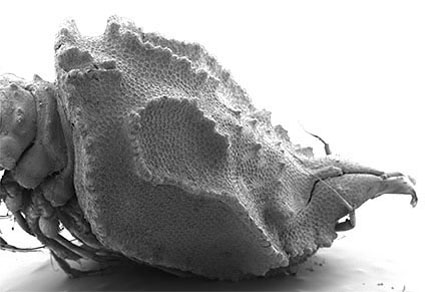Abstract
Currently, 15 species of the genus Campylaspis, collected between 40 and 4,680 m depth, are known from Brazil. In the present study, two additional species collected from Campos Basin, Rio de Janeiro and Espírito Santo States, between 393 and 733 m depth, are described. An updated list of all the Campylaspis species reported from Brazil along with an identification key for the deep-sea species are presented.
References
- Băcescu, M. & Petrescu, I. (1989) Contribution to the knowledge of the Campylaspis species (Crustacea, Cumacea) from the southern littoral waters of Brazil. Revue Roumaine de Biologie, Série de Biologie Animale, 34 (2), 65–71.
- Bonnier, J. (1896) n.k. In: Résultats scientifiques de la campagne du "Caudan" dans le golfe de Gascogne: août-septembre, Édriophthalmes. G. Masson, Lyon, pp. 537–689.
- Calman, W.T. (1905) The marine fauna of the west coast of Ireland, Part IV. Cumacea Fisheries, Ireland, Scientific Investigations, 1904 (I), 1–52.
- Calman, W.T. (1906) The Cumacea of the Puritan expedition. Mitteilungen aus der Zoologischen Station zu Neapel, 17, 411–432. https://doi.org/10.5281/zenodo.14941
- Coleman, C. (2003) ”Digital inking”: How to make perfect line drawings on computers. Organisms Diversity & Evolution, 3, 1–14. https://doi.org/10.1078/1439-6092-00081
- Corbera, J. (2008) New cumacean species (Crustacea: Peracarida) from Salomon Islands. Zootaxa, 1743 (1), 17–33. https://doi.org/10.11646/zootaxa.1743.1.2
- Gerken, S. (2012) New Zealand Ceratocumatidae and Nannastacidae (Crustacea: Cumacea). Zootaxa, 3524 (1), 124. https://doi.org/10.11646/zootaxa.3524.1.1
- Jones, N.S. (1974) Campylaspis species (Crustacea: Cumacea) from the deep Atlantic, Bulletin of the British Museum (Natural History), 27 (6), 247–300. https://doi.org/10.5962/bhl.part.22978
- Jones, N.S. (1984) The family Nannastacidae (Crustacea: Cumacea) from the deep Atlantic, British Museum (Natural History), 46, 207–289. https://doi.org/10.5962/bhl.part.15965
- Jones, N.S. (1990) The Cumacea of the Atlantic phase of the Belgium Cruise. Cahiers de Biologie Marine, 31 (1), 75–85.
- Mühlenhardt-Siegel, U. (2009) Cumacea (Crustacea, Peracarida) in the deep Mediterranean, with the description of one new species. Zootaxa, 2096 (1), 413–432. https://doi.org/10.11646/zootaxa.2096.1.25
- Petrescu, I. (2006) Nannastacidae (Crustacea: Cumacea) from eastern Bass Strait, the south-eastern Australian slope, and Antarctica in the collections of Museum Victoria. Memoirs of Museum Victoria, 63 (2), 129–173. https://doi.org/10.24199/J.MMV.2006.63.14
- Petrescu, I. (2018) On the Family Nannastacidae (Crustacea, Cumacea) from the Australian Museum Collection. Australian museum, 70, 1, 1–111.
- https://doi.org/10.3853/j.2201-4349.70.2018.1645
- Petrescu, I. & Wittmann, K. J. (2003) Elements for a revision and notes on bionomy of the Cumacea (Crustacea: Peracarida) of the Weddell Sea (Antarctica): Material collected by the Expedition ANTARKTIS-VIII/5 of RV ”Polarstern” 1989/90.”, Zoologische Mededelingen, 77, 557–630. [http://www.repository.naturalis.nl/document/44296]
- Sars, G.O. (1865) Om den aberrante Drebsdygruppe Cumacea og dens nordiske arter. Förhadlingar i Videnskabs-Selskabet i Christiania, 1865, 128–208.
- Sars, G.O. (1870) Beskrivelse af de paa fregatten josephines expedition fundne Cumaceer. Kungliga Svenska Vetenskaps Akademiens Handlingar, 9, 3–57.
- Sars, G.O. (1878) Nye Bidrah til Kundskaben om Middelhavets Invertebratfauna. II. Middelhavets Cumaceer. Archiv for Mathematik ig Naturvidenskab, 3, 461–512. https://doi.org/10.5962/bhl.title.10404
- Watling, L. & Gerken, S. (2024) World Cumacea Database. Campylaspis G.O. Sars, 1865. Accessed through: World Register of Marine Species. Available from: https://www.marinespecies.org/aphia.php?p=taxdetails&id=110415 (accessed 18 April 2024)
- Winter, W.R., Jahnert, R.J. & França, A.B. (2007) Bacia de campos. Boletim de Geociências da PETROBRAS, 15 (2), 511–529. Available from: https://bgp.petrobras.com.br/bgp/article/view/353 (accessed 9 December 2024)


